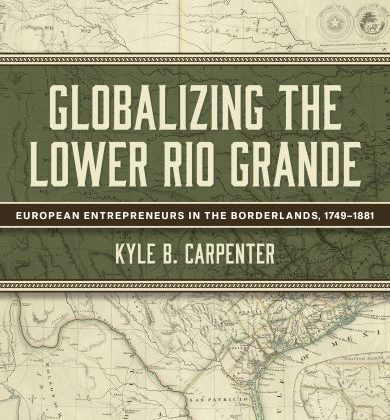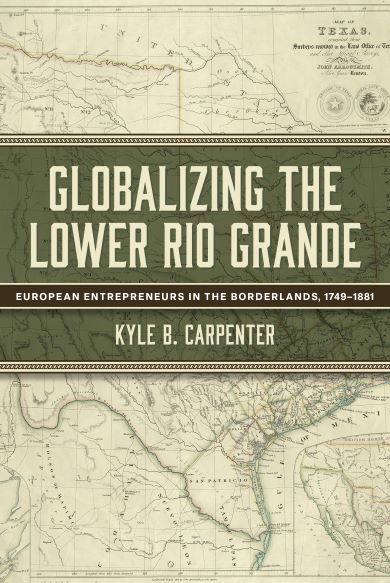

Kyle B. Carpenter is Associate Vice Chancellor of Academic Affairs at the University of Arkansas Rich Mountain. This interview is based on his new book, Globalizing the Lower Rio Grande: European Entrepreneurs in the Borderlands, 1749-1881 (University of North Texas Press, 2024).
JF: What led you to write Globalizing the Lower Rio Grande?
KC: When I was in my master’s program, I took a seminar on Texas History where I wrote a paper on the Galveston Bay and Texas Land Company. The company was essentially a land speculation venture that recruited settlers from North America and Europe. In doing the research for that paper, I wanted to learn more about the folks who sailed across the Atlantic to the Texas frontier. What happened to them when they got off the ships? Where did they go? What did they do? Those questions led me to dive into archival papers of European-born migrants. I found that there were Europeans all over the frontier region between the United States and Mexico. The Lower Rio Grande turned out to be a hotbed of European activity in the nineteenth century. The book slowly formed itself around who I thought were the most impactful European businesspeople in the Rio Grande borderlands.
JF: In 2 sentences, what is the argument Globalizing the Lower Rio Grande?
KC: The Rio Grande borderlands became a focal point for commercial modernization by European entrepreneurs who aimed to transform the region into a hub of the Atlantic economy, countering U.S. expansion. Though their efforts were largely thwarted by environmental challenges, notions of cultural superiority, and violent conflicts, the book ultimately demonstrates the contingent nature of American imperial expansion in the nineteenth century.
JF: Why do we need to read Globalizing the Lower Rio Grande?
KC: Historians have tended to ignore, or simply not notice, the significant European presence on the U.S. southwestern frontier. By centering the focus on European-born entrepreneurs, Globalizing the Lower Rio Grande offers a new lens to study the borderlands. As migrants, Europeans had to cooperate with local groups to succeed. They built relationships across cultural boundaries, played North American states against one another, and attempted to draw European states into protecting their interests on the American frontier. In their relationships, they attempted to transfer their norms and institutions to the frontier. They also actively connected the region to global ideas and markets beyond the United States. From the Spanish Imperial period to the Porfiriato and Gilded Age, Europeans continuously affected the Rio Grande borderlands. Also, many of the historical actors who appear in the book had colorful personalities. They make the book an entertaining read.
JF: Why and when did you become an American historian?
KC: I became an American historian in my freshman year of high school in Mr. Ames’s class. He had the ability to captivate a classroom with a riveting narrative but never lose the greater significance of the topic. I wanted to be just like him.
JF: What is your next project?
KC: I plan on diving into a project that focuses on the business life of George Catlin, the famous painter of the American West. He invested in Western land and land speculation schemes with personally disastrous results. I expect it will highlight the intersections of American business, expansion, and art.
JF: Thanks, Kyle!